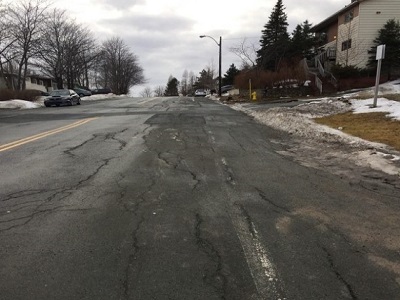
Funding/Research Supports
FEAS Start-up Funding Program and TotalPave.Com
Project Status
Complete
Project Overview
St. John’s, Newfoundland has a unique weather climate, i.e., a very high amount of precipitation year-round, temperate summer and moderate winter temperature. The pavement foundation (subgrade) layer in this region mainly consists of metamorphic strong rock. Since the city is located in an island and has small size of population, the road pavements of this city also experience very low volume of heavy traffic. Despite many negative factors for having pavement distresses, most of the road pavements in St. John’s, Newfoundland suffers from serious structural and functional distresses. The distresses include but not limit to different type of deformation (structural, abrasion), moisture damages (pothole, ravelling), fatigue (top down, bottom up), thermal cracking (longitudinal, transverse), etc. These distresses ultimately lead to longer travel times, higher vehicular and pedestrian accident rates and fatalities, excessive fuel consumption due to additional vehicle maneuvering actions by drivers due to poor road conditions, high CO2 emissions, and a sub-standard ride quality. To address these issues, a complete understanding of these distresses is a vital need. A detail field survey for these distresses will be conducted, classified and ranked based on the types and magnitudes. In addition, a technical summary for each distress will be presented, followed by the steps need to follow to reduce the occurring of these distresses in this region.
Project Report
Link to Preliminary Report (Phase-I): Field Inspection and Classification of Pavement Distress of St. John’s City in Newfoundland, Canada
Link to Preliminary Report (Phase-II): Towards development of PCI and IRI models for road networks in the City of St. John’s